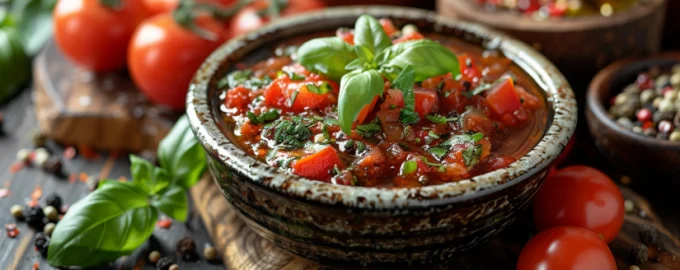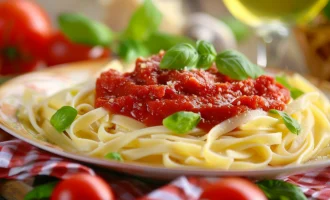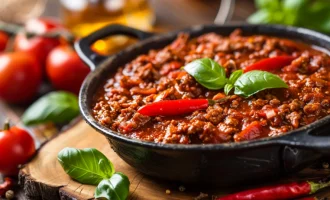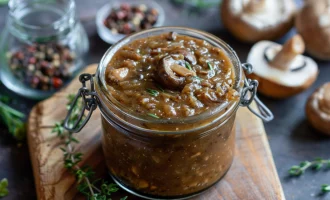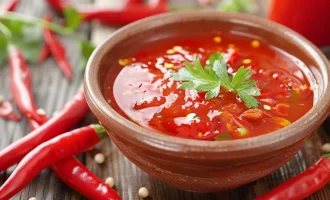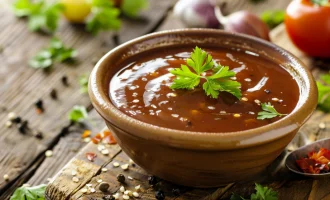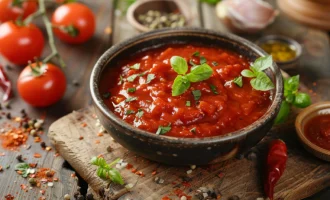Pasta sauce, an essential component of Italian cuisine, has a rich history that spans centuries and varies widely across regions in Italy. The origins of pasta sauce are as diverse as the ingredients used in them, with each region boasting its own traditional recipes. From the robust, meaty Bolognese sauce of Bologna to the fresh and vibrant Pomodoro from Naples, pasta sauces are a reflection of Italy’s culinary diversity and regional ingredients. Typically, these sauces are served with various pasta shapes, each chosen to best complement the sauce’s texture and flavor. A well-made pasta sauce can elevate the simple combination of flour and water to a memorable meal, showcasing the depth and richness of Italian culinary traditions.
- Olive oil 30 ml
- Garlic 20 g
- Onion 100 g
- Canned whole tomatoes 400 g
- Fresh basil 10 g
- Salt 5 g
- Sugar 5 g
- Ground black pepper 2 g
- Red pepper flakes 1 g
- Heat the olive oil in a large saucepan over medium heat. Add the chopped garlic and onion, sautéing until they are soft and translucent, about 5 minutes. Be careful not to let the garlic brown, as it can become bitter.
- Stir in the crushed tomatoes, including their juice, into the saucepan. Use your hands or a fork to break down the whole tomatoes into smaller pieces for a rustic texture.
- Bring the sauce to a simmer, then reduce the heat to low. Add the torn basil leaves, salt, sugar (if using), ground black pepper, and red pepper flakes (if desired). Let the sauce simmer gently, uncovered, for about 20-30 minutes, allowing the flavors to meld and the sauce to thicken slightly.
- Taste the sauce and adjust the seasoning with additional salt, sugar, or pepper as needed.
- Serve the sauce hot over cooked pasta, garnishing with additional fresh basil or grated Parmesan cheese if desired.

